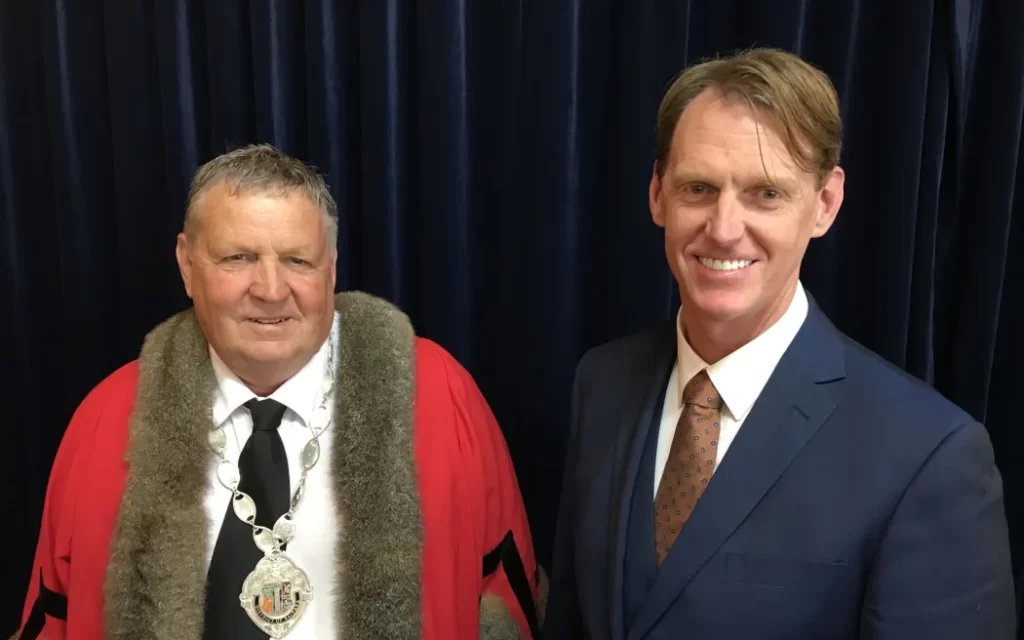A proposal to build a Kaipara-based $730 million waste-to-energy incinerator to burn Northlands waste has the backing of Kaipara mayor Craig Jepson. The proposal will involve South Island Resource Recovery Limited (SIRRL). This will be SIRRL and their shareholder company Renew Energy Limited’s (REL) fourth attempt at building a W-t-E plant in NZ. Previous proposals have included Westport, Hokitika and Waimate. The Waimate proposal was referred to the Environment Court in August 2023 and is currently stalled until SIRRL lodges the required water take consent and satisfies a request for more information about the proposal from the EPA.
The proposed Kaipara facility’s capacity would be double that of the Waimate plant, incinerating about 730,000 tonnes of Auckland and Northland rubbish each year.
“We’re at an exciting point where all the parts are coming together,” Kaipara Mayor Craig Jepson said of the proposed Kaipara plant.
Jepson said he wanted the Government to fast-track the plant’s consent rather than go through Northland Regional Council and his council.
However, Zero Waste advocate Sue Coutts said it was important to consider the incinerator’s climate, environmental, and health impacts as part of any consenting process, whether via the councils or the Government’s fast-tracking for major infrastructure projects.
Coutts said international waste-to-energy companies were looking for countries with weak regulations to sell their wares because European demand had dropped off.
“They head to small communities with very limited resources to investigate the impacts of incinerators,” Coutts said.
She said the proposed facility went against Northland’s renewable energy push.
Mayor Jepson has been eager to spruik the so-called benefits of Waste-to-Energy. Jepson has been a waste-to-energy advocate for 25 years, since his three-year involvement with investment company Olivine NZ as a shareholder and spokesman in the failed then $223m bid to convert the former Meremere power station to a waste-to-energy plant, which was canned in 2000.
Jepson stated that the Kaipara plant would have major benefits with a range of products resulting from its waste processing.
It would create 72MW of electricity annually, enough to feed the national grid for 165,000 homes. It would also produce 210 tonnes of construction aggregate, such as gravel.
Its steam could be used by Fonterra’s Maungaturoto dairy factory, while fly ash produced by incineration could be turned into glass and concrete.
“We’ve heard it all before” – Robert Ireland, Why Waste Waimate.
Why Waste Waimate, a group with over 200 members, formed in opposition to the Waimate proposal after public information sessions held by the company were found to be “lacking any real information.” Why Waste Waimate spokesperson Robert Ireland said. “We were given all the shiny embellishments, the greenwashing and Eurowashing, jobs for locals, aggregate recovery, generating enough electricity to power tens of thousands of homes, a better alternative to landfills, etcetera, etcetera. However, it’s the information they don’t tell you that’s the most important.”
These well-rehearsed salesmen sold us a narrative that was quite different from what was presented in their resource consent application. It turns out that there are regulations in NZ that prohibit the recovery of aggregates from incinerator ash.” Ireland said.
These discrepancies should raise a red flag for all of us, serving as a stark reminder to remain vigilant and question the information we are given.
SIRRL’s resource consent application states that the Waimate plant, will produce 100,000 tonnes of ash each year, which will be landfilled. Kaipara mayor Craig Jepson stated the Kaipara plant would produce 210,000 tonnes of “construction aggregate” annually. All this talk about providing better solutions to landfills that don’t involve burying waste in the ground for future generations to deal with. However, landfilling will play a major part in Project Kea’s operations. They kept that and the need to use huge amounts of diesel to run the plant out of the promotional material.
SIRRL claims that Project Kea will produce 20-30MW of electricity, enough to power 60,000 homes. “They state this as if they intend to provide electricity to local homes. However, they also state they will provide electricity and steam to local industry, but, when questioned on whether the company has any agreements with Oceania(the only neighbouring industry), the answer was no.” Ireland said.
Now we have the Kaipara Mayor, Craig Jepson, the latest in a long list of small town mayors putting support behind SIRRL and Renew Energy.
However Jepson seems to be leap-frogging logic. Without any proposal, the Mayor is wanting to have his concept expedite the approval process and bypass regulatory requirements via the government’s proposed Fast-Track legislation.
“Jepson may have taken some liberty around what support means.” Moko Tepania, Northland Mayor.
Kaipara mayor claimed support for the Kaipara proposal, including Northland, Whangārei and Auckland mayors.
Tepania, in an email sent to plant opponent Caren Davis, said it appeared Jepson may have taken “some liberty around what ‘support’ means”.
Jepson admitted later that he had perhaps oversold the council’s support

